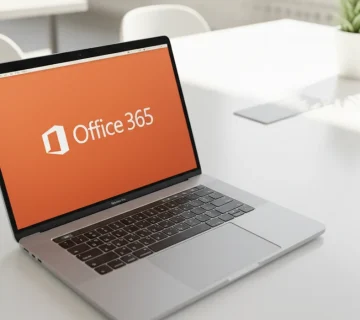Office 365 Business Mail makes businesses current and in touch with safe, reliable email. But SMTP or IMAP issues can make sending and receiving emails fail, and that makes work grind to a halt and shatters client trust. Most problems are due to the wrong settings, outdated settings, or connectivity problems, which are easy to solve. Properly setting up a Microsoft Office 365 account will prevent many such troubles from occurring. Maintaining your email client current and being wary of account settings also guarantees smooth communication. Properly set up, your team can communicate unbroken to operate the business smoothly.
Common Causes of SMTP and IMAP Failures on Office 365 Business Mail
There are many reasons that SMTP or IMAP will not work on Office 365 Business Mail. Knowing why is half the fight to a seamless fix. Here are the most common culprits :
- Misconfigured Settings – A wrongly configured port, encryption type, or server name will stop a connection.
- Authentication Mistakes – If there is an error in your authentication or two-factor authentication setup, access will be denied.
- Network Restrictions – Firewalls or ISPs may close mail ports which are necessary for mail reception (e.g. 587 or 993).
- Obscure Mail Clients – Incompatibilities may arise when using outdated mail clients that do not support new encryption (TLS) as this may lead to difficulty in communication.
- Expired Plan or License – An expired Office 365 email license may restrict your account from sending or receiving emails.
Finding the cause can save time and also stop unnecessary troubleshooting actions from being taken.
Step-by-Step Solution to Repair SMTP Errors
SMTP errors indicate your mail is not being sent. Below are the step-by-step instructions to repair them in Office 365 professional mail.
Check Outgoing Server Settings
Double check that your settings agree with Microsoft’s official SMTP settings:
- SMTP Server: smtp.office365.com
- Port: 587
- Encryption: STARTTLS
- Authentication: Required
Double verify that your password and username are entered correctly and that your mail app supports modern authentication.
Refresh Login Credentials
If you’ve recently changed your password or updated your Microsoft Office 365 account, ensure your email client uses the latest login details. Old credentials are one of the top reasons for SMTP failure.
Enable Authenticated SMTP
Authenticated SMTP can be disabled by default in certain organizations. Sign in to the Microsoft 365 admin center, navigate to your user’s mail settings, and activate “Authenticated SMTP.”
Check Firewalls and Ports
Firewalls are intended to prevent outgoing connections. Ensure port 587 is not being blocked by your security system or your internet service provider.
Check Software is Latest
Use only the latest mail clients that are Microsoft 365 setup compliant and Microsoft’s latest authentication techniques. Older software falls behind with encryption protocols, creating SMTP issues.
Once all the above have been determined, send a test email. In most cases, the issue should be resolved immediately.
Troubleshooting IMAP Issues in Office 365 Business Mail
IMAP handles incoming mail and syncs between devices. It will crash if it fails, and you’ll never view messages or enjoy endless syncing problems. The solution is provided below.
Check Incoming Server Settings
Use the correct settings:
- IMAP Server: outlook.office365.com
- Port: 993
- Encryption: SSL/TLS
An incorrect port or encryption type will crash the connection immediately.
Re-Authenticate Your Account
If your mailbox continues to prompt you to enter a password, delete your stored login and try again. For users with multi-factor authentication accounts, make sure to authenticate access on your trusted device.
Review Your Mailbox Quota
You can prevent IMAP synchronization if your mailbox quota is full. Delete duplicate messages or expand your space through Microsoft 365 email hosting to have your inbox running properly.
Inspect Antivirus and Security Software
Sometimes the security software may block the IMAP traffic. Temporarily disable them or whitelist the email ports and see if it fixes the problem.
Repair or Reinstall Outlook Profile
While using Outlook, corrupted local data can cause persistent sync problems. Reinstall your Outlook profile or navigate through the “Repair” option in the Control Panel.
Preventing Future SMTP and IMAP Problems
Once your mail has been retrieved, measures should be taken to make sure the issue doesn’t persist. These are the steps of how to keep Microsoft Business Email working:
Regularly Update Passwords and Permissions– All passwords should be changed and two-factor authentication set up.
Keep all software updated – Occasional updates guarantee complete compatibility with the Microsoft 365 business premium email feature and security standard.
Use Modern Authentication – Microsoft is dropping basic authentication; modern authentication supports safer and fewer lost connections.
Check Account Status – Frequently monitor your Office 365 business sign up and licensing status to prevent unexpected interruptions.
Enable Mail Backups – Use cloud-based backup options to store vital communication data in the event of sync failures.
Maintenance on a regular basis will yield smooth performance and a secure business email service.
How IT Support and Microsoft Can Help
If you’ve tried every fix and your email still won’t connect, it’s time to reach out to support. Contact email Microsoft customer assistance or your IT administrator to check server logs and policies. Some errors may be related to organization-wide restrictions or tenant settings beyond your control.
For companies whose business email account is Microsoft Business Mail, it’s more than worth it to invest in proactive IT monitoring tools. These notify administrators to connectivity problems ahead of time, maintaining workflow uninterrupted and reducing downtime.
Integration of Office 365 Business Mail the Right Way
Getting your email configured the first time saves most of these problems. Always double check configuration information, DNS records, and authentication settings when adding new users or restoring. Proper setup of your Microsoft office 365 new account ensures that both SMTP and IMAP connections are established securely and efficiently.
Whether it’s deploying a new system or introducing additional communication tools to your workforce, adhering to Microsoft’s documented guidance through your Microsoft 365 setup is vital. Further, using Microsoft 365 email hosting gives your business scalability and reliability backed by Microsoft’s global network infrastructure.
With these best practices, your MS Business Email infrastructure will be rock-solid, secure, and tuned for transparent communication on all your business hardware.
Final Insights
Recovery from SMTP and IMAP failures in Microsoft Business Email may seem like a daunting task, but with the proper strategies, it is easy and possible. Steer clear of the wrong configurations, refreshing credentials from time to time, and updating licenses, and your business can enjoy smooth, hassle-free communication. Email operation isn’t a luxury—careers communication and company success depend upon it as the supporting pillar. With active management and adequate settings, Office 365 Business Mail will still provide the speed, security, and efficiency that businesses in today’s world depend on every day.
Frequently Asked Questions(FAQs):
They usually occur due to incorrect settings, outdated credentials, or expired licenses. Checking configurations and authentication often fixes the issue.
Keep your software updated, enable modern authentication, and ensure your office 365 email license is active.
Verify SMTP and IMAP settings, confirm your credentials, and make sure your Microsoft office365 account is active.



